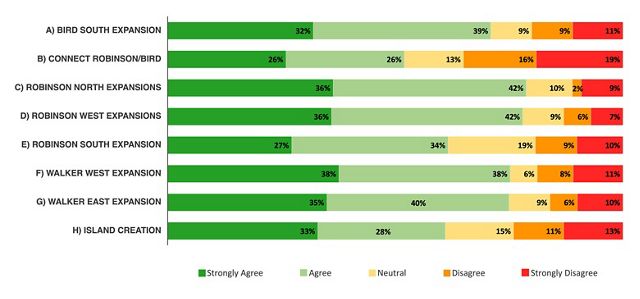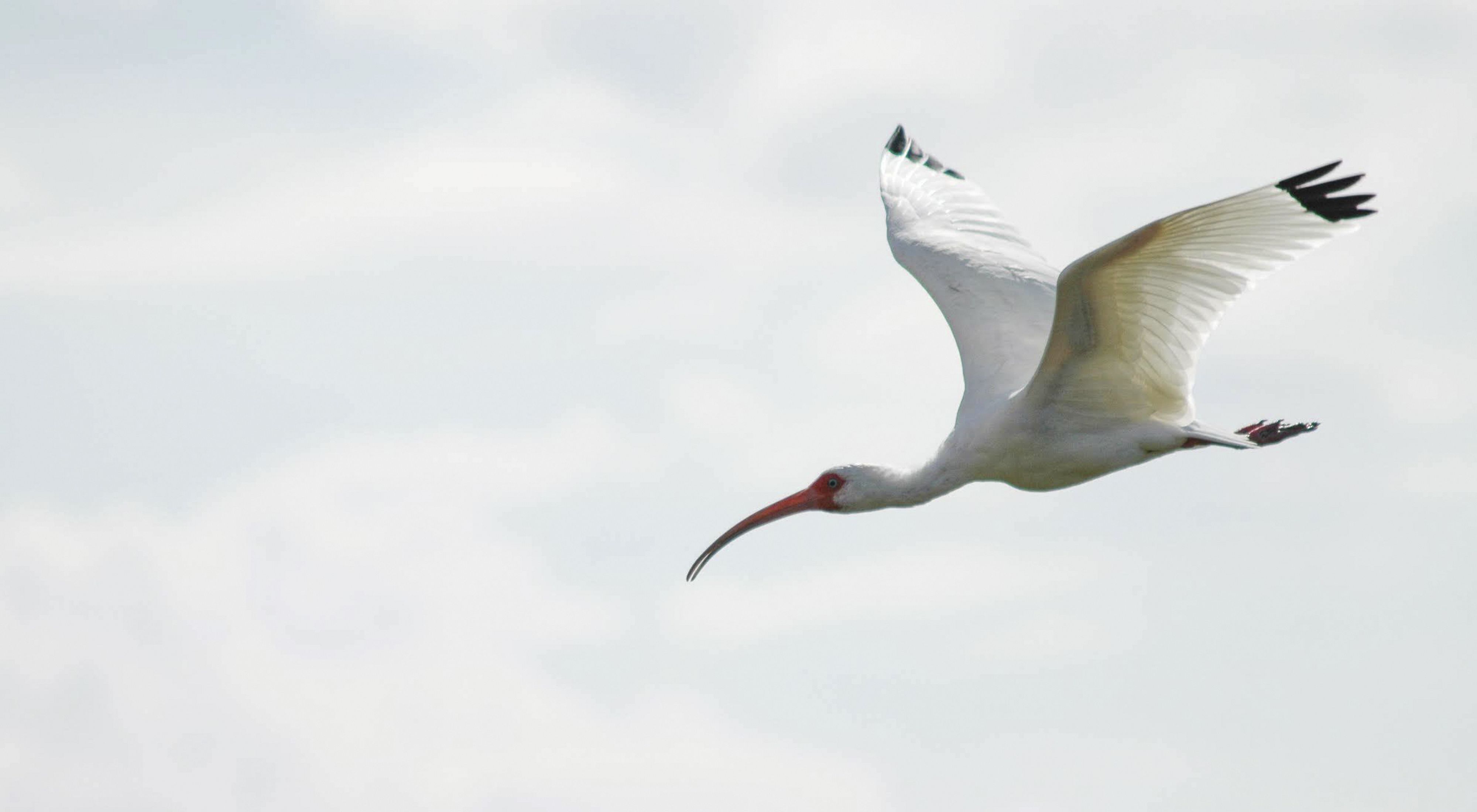Private and public partners are working together to keep the Perdido Islands the important and special place they are for people and nature.
The Lower Perdido Islands are a group of small, undeveloped islands (Bird, Robinson, and Walker) located near Perdido Pass in Orange Beach, Alabama. The islands and surrounding waters have never been more popular, and it’s not surprising given the beautiful blue-green waters, easy access to sandy beaches, and unique wildlife.
Many of the roughly 6.8 million visitors that Baldwin County hosts annually visit the islands and surrounding area. During holidays, the islands can host well over 500 boats at a single point in time and visitation numbers are ever-increasing. Their popularity has resulted in impacts to habitats and water quality in the area such as erosion from boat wakes, damage to seagrass, disturbance of nesting birds and their habitat, and increasing marine debris and human waste.
To address these concerns, the City of Orange Beach, Moffatt & Nichol, Olsen Associates Inc., and The Nature Conservancy have teamed up to develop a management plan which proposes conservation strategies and restoration concepts to support protection of the Lower Perdido Islands and their valuable habitats for the future.


Conservation Strategies
Marsh, sandy shoreline, forest, and seagrass beds are all habitat types found on and adjacent to the Lower Perdido Islands. These unique habitats support a diverse array of wildlife, especially shorebirds, wading birds and waterfowl. Common birds include tricolor herons, reddish egrets, little blue herons, snowy egrets, white ibis and brown pelicans. Great blue herons, great egrets, clapper rails, willets and woodcock also forage in the marsh. Migratory waterfowl and neotropical migrants utilize the area seasonally. The seagrass beds and calm, protected waters surrounding the islands provide nursery areas for coastal finfish and shellfish such as speckled seatrout, redfish, Atlantic croaker, shrimp and blue crabs.
Balancing the protection of these habitats with the recreational usage of the islands is a major challenge. Our conservation goals are to protect and sustain the biodiversity (habitats and wildlife) of the natural communities on and around the islands, while maintaining recreational opportunities for the public. These goals require conservation strategies that focus not only on habitat protection, but also raising public awareness of current rules and regulations and the importance of the unique habitats of the Lower Perdido Islands. Some of the conservation strategies highlighted in our plan are:
- Planting trees and shrubs for the nesting and roosting of wading birds
- Controlling vegetation in shorebird nesting and loafing areas
- Cordoning off areas to maintain distance between birds and humans
- Installing signs for public awareness (seagrass, no motor, no dogs, trash, etc.)
- Enforcing rules and regulations to protect the natural resources and for public safety
Survey Results: Conservation Needs
As promised, here are the results of the public survey for the Lower Perdido Islands Restoration Project. Thank you to everyone that participated! We had a total of 88 responses during the open survey period with over 70% of the respondents visiting the islands once a month or more and 67% using personal powerboats to visit. The top three reasons to visit the islands were:
- Water/beach access (72%)
- Areas for recreation (66%)
- Clear water (42%).
What are the top 3 reasons you visit the Perdido Islands? (Select up to 3.)
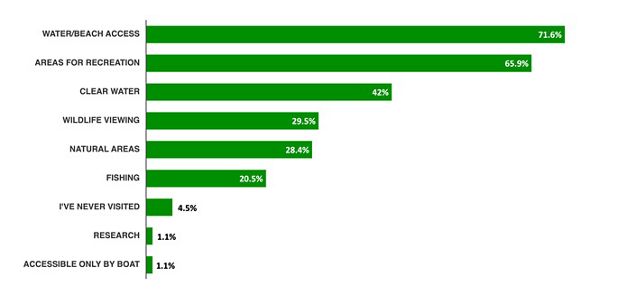
The highest needs for conservation of the islands were enforcement (42%), education (31%), and habitat (19%), and we couldn’t agree more! With lots of visitors to the islands year-round, enforcement of the rules and regulations that keep both humans and wildlife safe, coupled with a strong education effort to raise awareness, are key to sustaining the islands and their habitats for the future.
Conservation Needs
-
42%
Enforcement
-
30.7%
Education
-
19.3%
Habitat
According to the survey, most people find information on the Perdido Islands area on local websites and social media platforms like Facebook. Local regulations (83%), habitats (64%), wildlife (64%), and speed zones (55%) were listed as the most helpful types of information and floating buoys (85%), online sources (57%), maps (37%), and kiosks at boat ramps (33%) were found to the best places to display information. TNC and partners can use these insights to create educational materials that will be effective and meaningful to most people. These results are also right in line with the management actions outlined in our conservation management plan!
What type of information would be most helpful when navigating/visiting the Perdido Islands? (Select your top 3.)
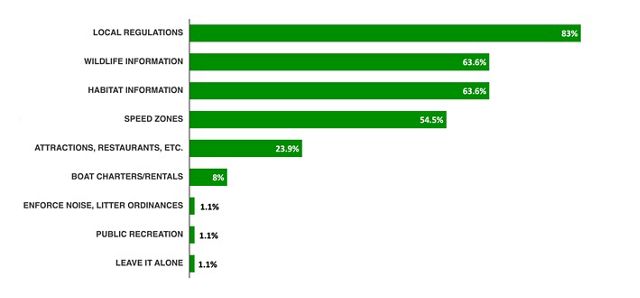
Restoration Concepts
While the conservation strategies focus on the management aspect of the islands, the concept recommendations propose restoration actions. These restoration concepts were developed by a team of ecologists and engineers to provide large-scale, sustainable options to restore and protect habitats while ensuring space for recreation. They were informed by stakeholder feedback, hydrodynamic modeling, morphological modeling, existing conditions, and project team coordination.
Restoration Concepts Key
A) Bird Island South Expansion: This area is already permitted for placement of dredged material and the sand flats could be expanded to support recreation at this popular site.
B) Connecting Robinson and Bird Islands: Connecting the two islands could provide upland and shoreline habitats for birds and wildlife, protect existing seagrass beds to the east, and provide additional space for recreation along the western shore.
C) Robinson Island North Expansion: Filling behind the existing rock breakwater structure would restore the north end of the island and provide habitat for birds and other wildlife.
D) Robinson Island West Expansion: Expanding the shallow west side of the island would provide sand flats for ground nesters and upland vegetated habitat for wading birds and other wildlife.
E) Robinson Island South Expansion: This area is already permitted for placement of dredged material and could support a small area for expansion of sand flats that would be popular for recreation.
F) Walker Island West Expansion: Expanding the island to the west would protect seagrass beds, reduce boat traffic, and increase shorebird habitat. This area would remain off limits to people to maximize habitat restoration benefits.
G) Walker Island East Expansion: Restoring the eastern end of the island could create valuable habitat for birds and other wildlife. This area would remain off limits to people to maximize habitat restoration benefits.
H) Creation of a New Island: Creation of a new island northeast of Walker Island would provide valuable habitat for birds and other wildlife. This area would remain off limits to people to maximize habitat restoration benefits.
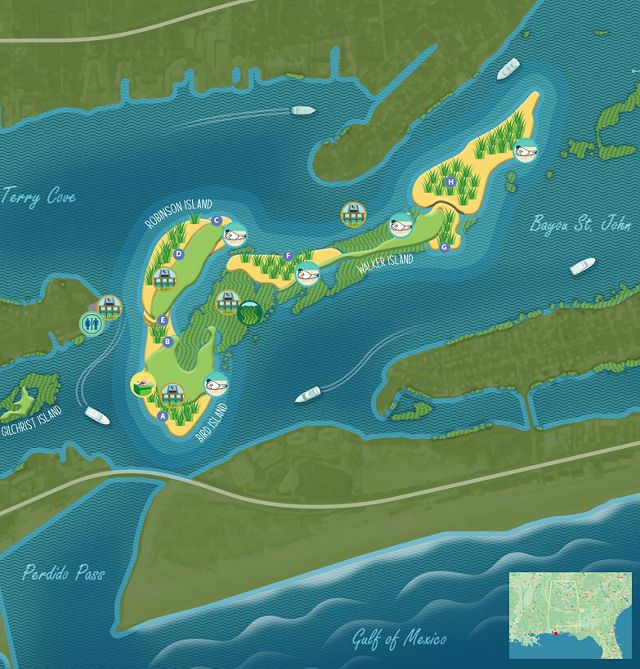
Survey Results: Restoration Concepts
TNC was most excited to see the feedback on the restoration concepts. In general, most respondents were supportive of all concepts. Expanding Robinson Island to the north and west and expanding Walker Island to the east and west were highly supported, while results were mixed on connecting Bird and Robinson Islands and the creation of a new island. Many of the additional comments echoed the need for enforcement and education, as well as the need to maintain adequate space for recreation while protecting habitats for wildlife.
All of this information is extremely helpful to our team as we move into the engineering and design phase of the project. We will be able to focus on the concepts prioritized by the engineering team through modelling that also received the most support from you and our stakeholders. Again, we thank each of you for your valuable feedback! Stay tuned for our next update!
Please rate your agreement or disagreement with each of the 8 peoposed restoration concepts for the Perdido Islands.
